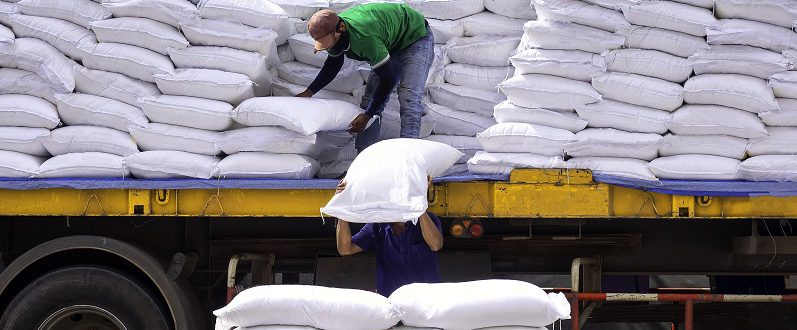Between 2012 and 2017, international humanitarian assistance grew annually by more than 10%. Yet in the four years that followed, this figure fell to 2.6%. This is primarily due to a fall in development spending from a number of European countries that historically have been strong contributors to foreign aid.
In the UK, successive governments have made significant cuts to Britain’s aid budget. Most notably, in 2021 the government reduced aid spending from the UN target of 0.7% of GNI on official development assistance (ODA) to 0.5%, a cut of £4.6 billion (US$5.5 billion). This resulted in aid spending being cut by 39% in Africa and 32% in Asia. Similarly, Norway’s 2023 budget proposal reduces their aid budget from 1.15% of GNI to 0.75%, the lowest percentage commitment in 46 years, despite record oil profits. In Sweden, there are plans to reduce aid by 7.3 billion kronor (US$670 million) in 2023 and a further 2.2 billion in 2024, abandoning their previous target of 1% of GNI on ODA.
Furthermore, Russia’s invasion of Ukraine in early 2022 and the subsequent humanitarian crisis it created have resulted in the diversion of significant funds away from development projects and humanitarian relief in the Global South. For instance, Denmark’s spending on housing Ukrainian refugees was reportedly diverted from money pledged to Syria, Mali, and Bangladesh. Sweden likewise announced plans to use up to one-fifth of their aid budget on the settlement of Ukrainian refugees, money which otherwise might have been spent in the developing world. There is a sense that the invasion of Ukraine has crowded out other humanitarian crises, leaving key areas short of funding. This is not to say that funding is not desperately needed to aid the Ukrainian people, but simply that it should not come at the expense of other, equally urgent humanitarian crises. Indeed, Development Initiatives calculated that between 2012 and 2021, the average funding coverage for humanitarian appeals by the start of August was 47%, but in 2022, in crises other than Ukraine, the coverage was just 30%.
The effects of this reduction, and the diversion of funds towards Ukraine, is not limited to a shortage of funds for humanitarian crises and emergencies but affect all facets of development. Projects which might have done vital work in education, climate change adaptation, or poverty reduction may not have the funding to proceed or will only be able to do so at a limited capacity. According to UN institutions, a 30% cut in core aid support would mean ‘2 million people without access to clean water, 2 million fewer children without their right to attend school, and 4 million teenagers without access to sexual education’. The Guardian likewise reported that the 2020 UK aid cuts would result in 5.6 million more children left unvaccinated and lead to 100,000 preventable deaths.
However, it must be said that whilst countries such as the UK, Sweden, and Norway appear to be lessening their commitment to foreign aid, this is not true for the entire Western world. Aid from the USA was 40% higher in June 2022 than the corresponding month in 2021 even after aid to Ukraine is excluded. Similarly, Spain increased ODA in October 2022 from 0.28% to 0.34% of GNI, and there is legislation in the works that would aim to increase the commitment to 0.7% by 2030. Moreover, in the EU public support for foreign aid seems to be increasing, with a Eurobarometer poll in February-March 2022 finding that 80% of respondents agreed that tackling poverty in partner countries outside of Europe should be one of the EU’s main priorities, the highest level on record.
With a global financial crisis looming and commodity prices continuing to rise, foreign aid is often an easy target for governments seeking to cut spending. These calls to prioritize domestic concerns in times of difficulty can be convincing. Already we have seen this in the aforementioned northern European countries, whilst other states such as Italy are rumored to be considering similar cuts. Yet government foreign aid remains a key part of international development and will only become more important as the world seeks to meet the UN sustainable development goals to end poverty and alleviate the effects of climate change. Indeed, many of the projects that IIRR carries out are only possible through the generous support of Western countries’ development agencies. For instance, IIRR’s implementation of four Climate-Smart Villages in Myanmar, which has involved the creation of resilient food systems with the distribution of drought-tolerant hyacinth beans and the introduction of agroforestry, was made possible through the support of IDRC-Canada.
Furthermore, not only does foreign aid contribute hugely to international development, but it also provides benefits for the donor country. Analysis by the Overseas Development Initiative found that every £1 increase in aid provided by the UK boosted their exports by £0.22, and in 2016 the level of aid provided under the 0.7% target created 11,700 jobs in the UK itself. Foreign aid, then, is both enormously important to international development and also makes financial sense for developed donor countries. Therefore, as the mood in parts of the West appears to be turning insular and an increasing number of countries consider cutting ODA, the importance and effectiveness of foreign aid in overcoming the challenges of the 21st century should be continually emphasized so that the world as a whole can move to a brighter future.

Sources:
https://devinit.org/documents/1193/GHA2022_Digital_v8_DknWCsU.pdf
https://www.devex.com/news/fcdo-releases-data-on-the-4-6b-cut-to-uk-aid-103031
https://www.devex.com/news/norway-proposes-cutting-aid-share-to-46-year-low-104158
https://foreignpolicy.com/2022/12/12/ukraine-is-crowding-out-the-worlds-foreign-aid/
https://www.devex.com/news/sweden-pulls-1b-in-foreign-aid-for-ukrainian-refugees-at-home-103164
https://devinit.org/documents/1219/The_Ukraine_crisis_and_diverted_aid-What_we_know_so_far.pdf
https://foreignpolicy.com/2022/12/12/ukraine-is-crowding-out-the-worlds-foreign-aid/
https://devinit.org/documents/1219/The_Ukraine_crisis_and_diverted_aid-What_we_know_so_far.pdf
https://www.globalcitizen.org/en/content/rich-countries-cutting-international-aid-budget/
https://europa.eu/eurobarometer/surveys/detail/2673
https://www.cgdev.org/blog/italys-move-right-and-implications-global-development
https://institute.global/policy/uks-international-aid-commitment




